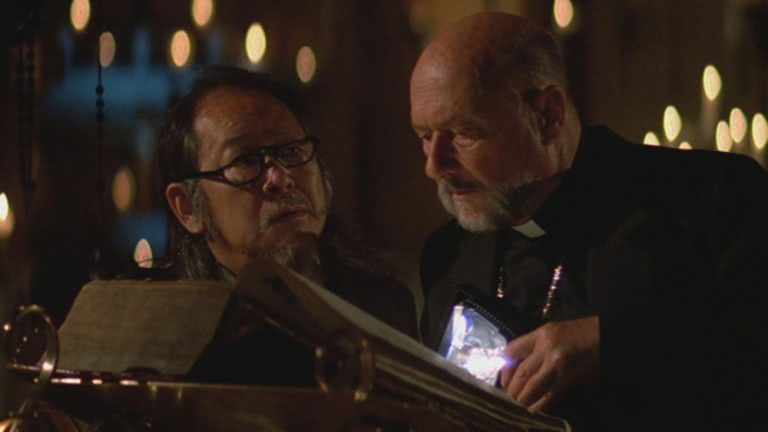The John Carpenter body of work is full of some incredible films (Halloween, The Thing), but there are some definite duds (Ghosts of Mars). His 1987 film, Prince of Darkness, is no dud but it’s not exactly his best work either. It is, however, a good example of how a few really good moments can uplift an otherwise okay film.
Deep beneath an abandoned Los Angeles church lays a giant canister that houses a mysterious green liquid. Father Loomis invites Professor Howard Birack and a group of graduate students to examine the canister, and it quickly turns out it’s the essence of the ultimate evil.
Carpenter had become disillusioned with Hollywood after Big Trouble In Little China was a critical and financial flop.
From there, the film plays out as a spiritual sister to The Thing. The group becomes trapped inside the church, while one by one they’re either possessed by Satan’s lime cordial or are killed. The uninfected need to stop the Devil Juice from possessing a Chosen One that will allow the ultimate evil to manifest and bring about the end of days.
John Carpenter had become disillusioned with Hollywood after Big Trouble In Little China was a critical and financial flop. He wanted to return to his independent roots, which explains why Prince of Darkness is so lean. It also explains why it’s not as strong as his other films (and somewhat derivative of his past works). There’s a sense that he just wanted to make something, anything, that’d let him move past Big Trouble.
Watch the trailer for Prince Of Darkness below
That need to create explains why Prince of Darkness feels so fast-and-loose; it’s full of moments that see Carpenter exerting his creative control to do whatever he wants, and flexing his filmmaking muscles in the process. He’d had become interested in quantum physics before making PoD, and he explores those ideas through a supernatural lens. Every particle has an anti-particle, so it stands to reason that if there’s a God, then there’s an Anti-God. Combine the two and you achieve total annihilation. There’s uniqueness about that concept – a marriage of science and religion where one rounds out the other.
Love Music?
Get your daily dose of metal, rock, indie, pop, and everything else in between.
Even on an off day, John Carpenter is still one of the masters of the horror genre. One student on the verge of possession slits his own throat while singing ‘Amazing Grace’ and another falls apart when it’s revealed he’s a bunch of cockroaches wearing a skin suit.
When we finally get a shot of someone submerged in the Anti-God’s universe – which can only be entered through a mirror – we’re greeted with an infinite void of darkness where characters appear as if they’re drowning. The shot of someone sinking into that void is one of the best of Carpenter’s already impressive career.
Every particle has an anti-particle, so it stands to reason that if there’s a God, then there’s an Anti-God.
While staying in the church, the characters all suffer from a shared, recurring dream – “neural transmission” from the year 1999. It’s a fever dream formed from VHS-static and disorientating camera moves; a deep, distorted voice warns them of the Anti-God’s apocalypse while a shadowy figure emerges from the church’s doors. It feels like a genuine nightmare.
If you haven’t seen Prince of Darkness in awhile, you should revisit it. If you’ve never seen it, it’s worth a watch. The concept of quantum physics horror is interesting and John Carpenter knows how to create a creepy atmosphere: the film is packed with dimly light hallways, people standing motionless in the distance, and throbbing synths. The last ten-minutes of Prince of Darkness feel like someone has dumped a bucket of ice water over your head while punching you in the stomach at the same time. Say what you want about the rest of the movie, but that ending makes it worth it.
Also, Alice Cooper plays a murderous vagrant who kills a guy by impaling him on a bicycle frame. Watch it for that.


































